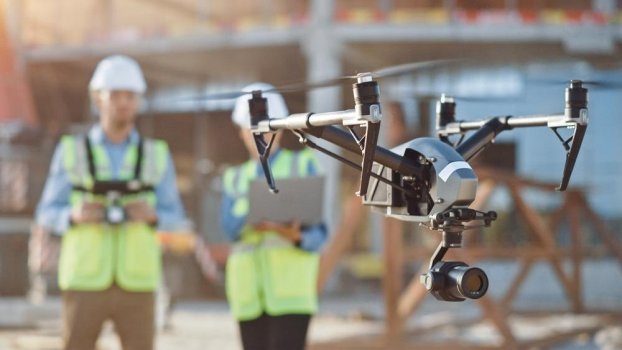K
Kathleen Martin
Guest
The Growing Use of Drones in Society
Drones are increasingly being utilized by numerous industries for applications such as surveillance, monitoring, and delivery. They are used for gathering information and delivering supplies during disasters, thermal sensing during search and rescue operations, crop spraying for agriculture, and mapping inaccessible terrain. They are also being increasingly employed by law enforcement and the military.
Drones typically employ between 4 and 8 rotor blades to provide lift and control during flight. They rely on lithium batteries for power. Despite their utility, some challenges exist in drone design that limit their widespread commercial uptake across society.
Limitations with Current Drone Designs
Drones are largely limited by their power capacity and flight time. Whilst larger capacity lithium batteries can be installed in them, this increases their weight and consequently reduces the payload they can carry. For this reason, drones must be recharged. Currently, charging requires human intervention, limiting the autonomy of the devices. The typical flight time of a drone is 40 minutes.
To overcome this limitation, wireless charging pads have been proposed for the drone industry that facilitates autonomous fast charging that extends the operational ability of drone technologies. Several designs have been explored by researchers in recent years. Wireless charging technologies are currently widely employed in several industries. A charge is transmitted from a transmitting coil within the ground base station to a receiving coil in the device that requires charging.
Considerations for Wireless Charging Technology
Wireless charging devices for drones need to account for several factors. The main consideration is limiting the weight of the receiving coil onboard the drone to provide optimal operating efficiency. Another key consideration is the possible misalignment of both receiving and transmitting coils due to imprecise landing, which can affect the coupling of coils and therefore charging efficiency and performance of the system.
Different solutions have been proposed to overcome these issues. One proposed system is an inductive charging system that employs a receiving coil situated on the drone’s landing gear. Whilst this reduces the distance between transmitting and receiving coils, the presence of an external coil could interfere with mission-critical drone components such as cameras.
Another proposed solution involves using a large receiving coil to improve power transfer, but this adds extra weight to the drone. Additionally, systems that employ transmitters and receivers with multiple coils have been proposed, but this limits payload installation by taking up space. A further proposed system uses a transmitter installed on movable parts in the landing pad to overcome alignment issues, but whilst this improves electrical performance, it reduces the system’s reliability due to the moving parts.
Continue reading: https://www.azom.com/news.aspx?newsID=57620
Drones are increasingly being utilized by numerous industries for applications such as surveillance, monitoring, and delivery. They are used for gathering information and delivering supplies during disasters, thermal sensing during search and rescue operations, crop spraying for agriculture, and mapping inaccessible terrain. They are also being increasingly employed by law enforcement and the military.
Drones typically employ between 4 and 8 rotor blades to provide lift and control during flight. They rely on lithium batteries for power. Despite their utility, some challenges exist in drone design that limit their widespread commercial uptake across society.
Limitations with Current Drone Designs
Drones are largely limited by their power capacity and flight time. Whilst larger capacity lithium batteries can be installed in them, this increases their weight and consequently reduces the payload they can carry. For this reason, drones must be recharged. Currently, charging requires human intervention, limiting the autonomy of the devices. The typical flight time of a drone is 40 minutes.
To overcome this limitation, wireless charging pads have been proposed for the drone industry that facilitates autonomous fast charging that extends the operational ability of drone technologies. Several designs have been explored by researchers in recent years. Wireless charging technologies are currently widely employed in several industries. A charge is transmitted from a transmitting coil within the ground base station to a receiving coil in the device that requires charging.
Considerations for Wireless Charging Technology
Wireless charging devices for drones need to account for several factors. The main consideration is limiting the weight of the receiving coil onboard the drone to provide optimal operating efficiency. Another key consideration is the possible misalignment of both receiving and transmitting coils due to imprecise landing, which can affect the coupling of coils and therefore charging efficiency and performance of the system.
Different solutions have been proposed to overcome these issues. One proposed system is an inductive charging system that employs a receiving coil situated on the drone’s landing gear. Whilst this reduces the distance between transmitting and receiving coils, the presence of an external coil could interfere with mission-critical drone components such as cameras.
Another proposed solution involves using a large receiving coil to improve power transfer, but this adds extra weight to the drone. Additionally, systems that employ transmitters and receivers with multiple coils have been proposed, but this limits payload installation by taking up space. A further proposed system uses a transmitter installed on movable parts in the landing pad to overcome alignment issues, but whilst this improves electrical performance, it reduces the system’s reliability due to the moving parts.
Continue reading: https://www.azom.com/news.aspx?newsID=57620

